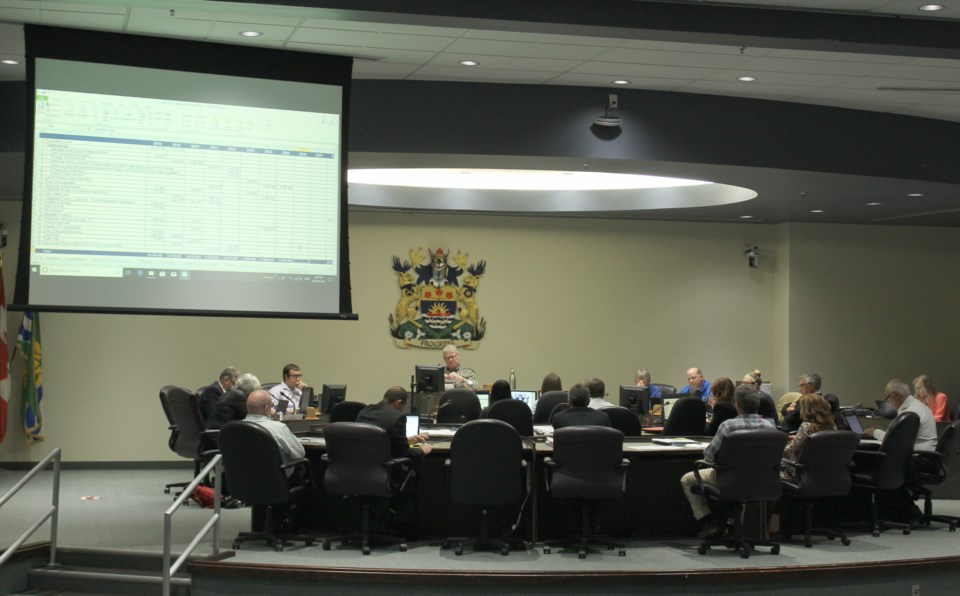Feeding the reserves and borrowing from within will put Orillia in a favourable financial position, city council heard this week.
Council was updated on the city’s major capital plan Wednesday afternoon.
Combined, the city’s reserves have a negative balance of about $48.5 million, which is financed with $10 million of external debt and $38.5 million of internal borrowing.
The city has contributed to its reserves almost double the amount it spent, explained treasurer Jim Lang. It added $14 million from the tax levy, $3 million in development charges and $7 million from water and wastewater
“There will always be some amount of outstanding committed capital funding that will temporarily reduce the need for debt,” Lang wrote in his report to council. “However, as several major projects are completed in the next 12 months, the cash balance will be reduced throughout the year. The projection in the (major capital plan) is that short-term borrowing will be required starting in late 2018. Because of positive cash flow projections in 2020 and beyond, long-term debt is not expected to be required. This will change as capital priorities change.”
After the meeting, Mayor Steve Clarke said the “overall picture is good.”
Its practice of internal borrowing could be contributing to that.
Jasvinder Rattigan, manager of treasury, noted Orillia is unique in that it is using its own cash to fund projects.
“It makes us uncomparable,” she said. “What we’ve done is unique and we’ve used the cash flow that we have.”
The mayor pointed to the positive projection of the city’s per-capita debt.
In 2015, Orillia’s debt per person was about $1,300. Last year, it was $791. The outlook for the next few years sees it dropping again: $431 in 2018, $64 by 2021 and none at all in 2022.
Coun. Sarah Valiquette-Thompson acknowledged the city is “in good standing now,” but that doesn’t mean the next couple of terms of council will be free of debt.
“I try to remember that the plan that we saw (Wednesday) is this council’s plan,” she said, adding capital needs and priorities can change quickly and alter the financial picture.
For instance, there has been talk of adding an ice rink and a field house to the recreation centre after it is built, which would cost about $25 million.
“Where is that money coming from?” Valiquette-Thompson asked. “In order to keep that debt per capita at $1,000 or less, we have to be really careful about spending.”
While the ice rink and field house are possibilities, they’re not set in stone, and since this is a municipal election year, Valiquette-Thompson said council members who will run for re-election should be careful with the commitments they make.
“I caution people against promising residents arenas and extra ice facilities,” she said.
One way to help keep the city in a positive position is to establish a minimum balance for reserves. That is something staff is looking into. It would be a decision for the next term of council.
The major capital reserve was created in 2006 to address five projects city had planned but did not have the money to fund. Three of those projects have been completed — fire stations 1 and 2 and the Orillia Public Library. The recreation centre is under construction, and the new Orillia OPP detachment no longer requires capital funding from the city.
